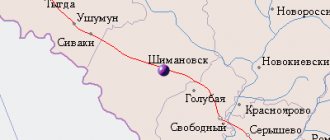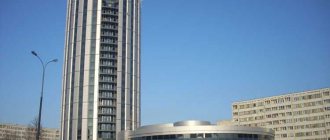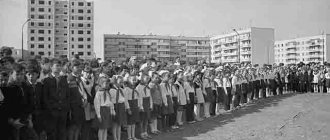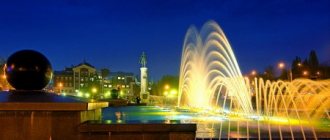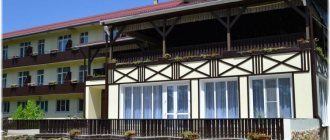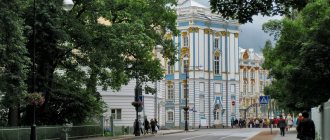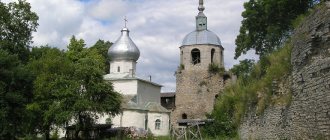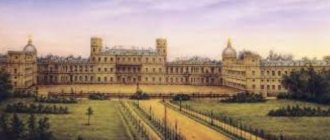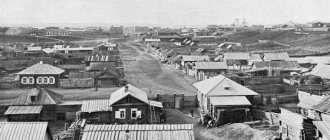City in Stavropol Krai, Russia
| Svetlograd Svetlograd | |
| Town[1] | |
| Types of Svetlograd | |
| Flag Coat of arms | |
| Location Svetlograd | |
| Svetlograd Location Svetlograd Show map of Russia Svetlograd Svetlograd (Stavropol Territory) Show map of Stavropol Territory | |
| Coordinates: 45°21′N 42°51'E / 45.350°N W. 42.850 ° E. / 45.350; 42.850Coordinates: 45°21′N 42°51'E / 45.350°N W. 42.850 ° E. / 45.350; 42.850 | |
| A country | Russia |
| Federal subject | Stavropol region[1] |
| Administrative region | Petrovsky district[1] |
| Town | Svetlograd |
| Based | 1750 |
| City status from | 1965 |
| Height | 130 m (430 ft) |
| population (2010 Census)[2] | |
| • General | 38,520 |
| Administrative status | |
| • Capital from | Petrovsky district[1], Svetlograd |
| Municipal status | |
| • Municipal district | Petrovsky municipal district[3] |
| • Urban village | Urban settlement Svetlograd[3] |
| • Capital from | Petrovsky municipal district[4], urban-type settlement Svetlograd[3] |
| Timezone | UTC + 3 (MSK [5]) |
| Postal code(s)[6] | 356530 |
| OKTMO I WOULD | 07646101001 |
| Web site | Svetlograd.org |
Svetlograd
(Russian: Svetlograd) is a town and the administrative center of Petrovsky District in Stavropol Krai, Russia, located on the Kalaus River, 85 kilometers (53 mi) northeast of Stavropol, the administrative center of the krai. Population: 38,520 (2010 Census);[2]39,370 (2002 Census);[7]37,213 (1989 Census).[8]
Svetlograd
(Stavropol region)
OKATO code:
07246501
Founded:
1750
City since:
1965 City of regional subordination
Center:
Petrovsky district
The city was formerly called:
| Petrovskoe | 1786 | 1965 |
| Telephone code (reference phone) | |
| 86547***** | 33-3-33 |
Deviation from Moscow time, hours:
0
Geographic latitude:
45°20′
Geographic longitude:
42°51′
Altitude above sea level, meters:
130 Sunrise and sunset times of the Sun and Moon in the city of Svetlograd
Gallery
The railway station building was built in 1915 (2009).
The former building of the zemstvo hospital, built in 1912 (winter 2011).
Gymnasium No. 1 is the oldest educational institution in the city.
Red Bridge over the Kalaus River within the city (winter 2011).
Stelaa at the entrance to the city
History and natural features
The salt lake is located in the steppe zone in the valley of the Kalaus River at the foot of Mount Kutsai. It is a relict, characterized by bitter-salty waters and a large supply of healing silts and mud. The shores of Lake Lushnikovskoye are covered with salt efflorescences; saltworts and saltworts are present.
There is an opinion that in 1920 Semyon Budyonny, one of the first marshals of the Soviet Union, treated his soldiers on this lake.
Back in 2006, scientists from the Pyatigorsk Research Institute proved that the mud and brine of the Salt Lake cure diseases of the joints, skin, and respiratory organs. Due to the lack of infrastructure, Lake Lushnikovskoye cannot be called a resort. People come here on their own, performing procedures right on the shore of the lake.
© Fedor Lashkov
Since 2011, the regional government intends to turn this place into a resort area by creating a sanatorium, but since then no changes have occurred.
On August 10, 2015, the Government of the Stavropol Territory adopted a resolution on the creation of a natural reserve of regional significance. It includes four sections, including Salt Lake. The purpose of creating the reserve is to preserve flora and fauna, promote eco-tourism and education. However, the reservoir was already included in the reserve in 1999, at that time its territory was much smaller.
In 2022, the reservoir acquired an uncharacteristic pink color. Experts have found that this is due to crustaceans that are capable of coloring water. These are the only inhabitants of the salt lake in this way adapt to the drought, as a result of which the reservoir has become very shallow. Underground springs cannot cope with the replenishment of the relict lake. This threatens the lake with extinction.
© Olga Elarinova
Flora and fauna
On the territory of the Salt Lake reserve of the same name, 719 species of plants grow: creeping wheatgrass, Marshall thyme, bluegrass, steppe sage, early horehound, including those that are in the Red Book: Crimean iris, angustifolia peony, beautiful feather grass, feathery , Bieberstein tulip, Pallas thyme.
Of the 131 species of animals, there are also those that are protected by law: avocet, stilt, corncrake, steppe polecat, bandaged snake, and four-striped snake. Popular birds include mallard, gray crane, gray duck, mute swan, teal, teal, gray partridge, bittern, pheasant, and heron. There are also raccoons, foxes, hares, and muskrats.
Salt Lake on Google Panoramas
Mud and healing properties of Salt Lake in the Petrovsky district
Healing salts, silts and mud are found on the coast and in shallow waters; you can simply get them with your hands. In the medicinal mud of the Salt Lake of the Stavropol Territory, all the same elements that are present in water were found: sulfates and chlorides of potassium, sodium, magnesium, calcium, Glauber’s salt, sulfur compounds.
Rapa is a concentrated saline solution that is used everywhere for the treatment of rheumatism, abscesses, diffuse goiter and other diseases of the cardiovascular, digestive, respiratory, musculoskeletal, nervous, endocrine systems of the body, and also helps with rehabilitation after injuries, operations, enhances metabolic processes. Rapa relieves pain, spasms, improves heart function, treats skin diseases, promotes wound healing, increases blood circulation and vascular tone.
Salt crystals on the shore, ©
The mud of the Salt Lake of Svetlograd is collected from the bottom not far from the shore. They appear as black spots on a gray surface underwater.
Black mud should be used with caution and only with knowledge of the matter, that is, according to indications.
Due to the unique organomineral composition, mud can have a positive effect on the body. It is also worth noting the thermophysical properties, which allows you to warm up problem areas of the body, which is important for spa treatment. Cold mud is used in body wraps for cosmetic purposes. Indications include diseases of the digestive system, ENT organs, genitourinary, and musculoskeletal systems.
Treatment with the help of Salt Lake in Svetlograd should be conscious. Careless use can cause serious problems for life, one of which is varicose veins. There are many contraindications: heart defects, atherosclerosis, aneurysm of the heart, aorta, hypertension, tendency to bleeding, nephrosis, nephritis, thyroid dysfunction, other endocrine problems, malignant neoplasms, nervous system disorders, pregnancy.
© Dmitry Ignatov
Population
City population dynamics:
| Year | 1789 | 1819 | 1850 | 1889 | 1907 | 1959 | 1970 | 1979 | 1989 | 2000 | 2002 | 2003 | 2004 | 2005 | 2006 | 2007 | 2010 | 2011 |
| Population (thousand people) | 0,118 | 0,559 | 5,532 | 5,938 | 8,996 | 24,3 | 30,9 | 33,6 | 37,2 | 40,4 | 39 370 | 39,4 | 39,5 | 39,5 | 39,5 | 39,4 | 38 520 | 38 496 |
National composition
- 4) Gypsies - 338 people (0.86%)
- 1) Russians - 36 thousand 900 people (93.73%)
- 2) Armenians - 604 people (1.53%)
- 3) Ukrainians - 406 people (1.03%)
Microdistrict division
The city consists of microdistricts:
- Slide
- Energy town
- Long
- Cheryomushki
- Victory
- Nosachev village (incorporated into the city in 1965)
- Kachavan
- Railway
- Solenoye Ozero village (incorporated into the city in 1965)
- Elderberry
- Tutinovoye
- Kislichee
- Factory town
- Center
